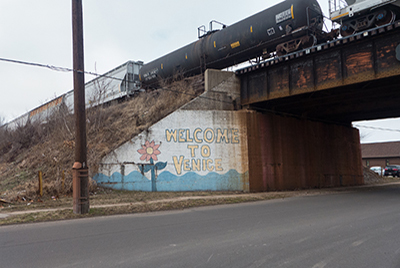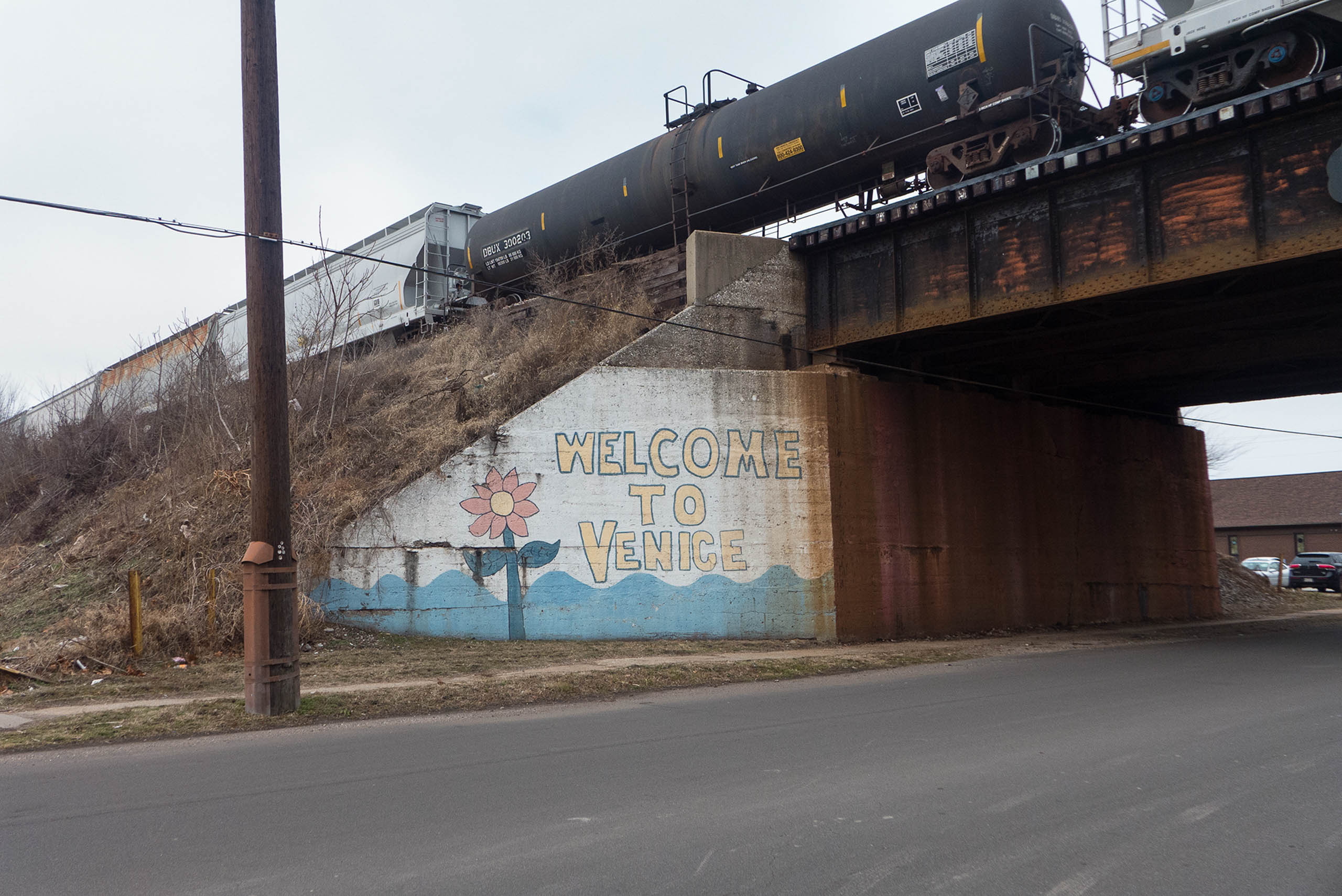



Settlement here dates to 1804, when a ferry was chartered connecting Venice with the north side of St. Louis. The town was platted in 1841 and incorporated in 1873, taking its name from the Italian city of water—though one author has noted that “one could scarcely imagine a more incongruous contrast with the Queen of the Adriatic.” Like its namesake, Venice, Illinois, has long been prone to inundation and saturations, and it features most prominently in the archives as a site of repeated destruction in the wake of the floods of 1844 and 1851, after which the old portion of the town no longer appeared on town plats. Writing in his 1915 study of the East Side industrial suburbs, urban historian Graham Taylor reflects on the “straggling houses and hovels” of this area when he states, “This is Venice, unkempt, amphibious.” Its aptly named Water Street once formed the edge of the river in a time before integrated levee systems distanced towns from the river and when cities fought to strategically position themselves as physically close to the water as possible. Now the town of Venice sits a quarter mile and a lifetime away from its riverfront past.